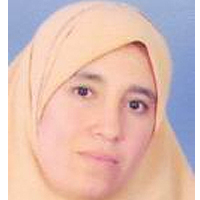Double-Positive Anti-GBM and ANCA Vasculitis: 2 Case Reports and Review of the Literature
Published on: 21st January, 2025
Double-Positive Patients (DPPs), characterized by the simultaneous presence of Anti-Neutrophil Cytoplasmic Antibody (ANCA) and anti-Glomerular Basement Membrane (anti-GBM) antibodies, represent a rare subset in systemic vasculitis. We present two cases of DPPs with renal involvement and review the existing literature to elucidate the clinical characteristics, histopathological findings, management strategies, and prognostic outcomes associated with this condition. Both cases exhibited renal involvement with rapidly progressive glomerulonephritis, requiring renal replacement therapy. Renal biopsies confirmed crescentic glomerulonephritis with features of both anti-GBM disease and ANCA-associated vasculitis. Management included high-dose glucocorticoids, cyclophosphamide, and consideration of plasma exchanges. Double-positive ANCA and anti-GBM vasculitis pose challenges in management and prognosis. Further research is essential to improve therapeutic strategies for this rare and heterogeneous condition.
PTM-Fetuin-A: A Novel Biomarker for Early Detection of Diabetic Kidney Disease
Published on: 24th January, 2025
Chronic Kidney Disease (CKD) is a significant public health issue with a rising prevalence globally. Diabetic kidney disease (DKD), a leading cause of CKD, necessitates improved biomarkers for early detection and effective management. Traditional markers such as serum creatinine, estimated glomerular filtration rate (eGFR), and albuminuria have notable limitations in sensitivity and specificity, especially for early detection. Fetuin-A, specifically its post-translationally modified form (PTM-Fetuin-A), has emerged as a potential novel biomarker for DKD. This study evaluates PTM-Fetuin-A in a cohort of Bulgarian patients with type 1 and type 2 diabetes, assessing its correlation with traditional markers such as albuminuria and eGFR. Significant correlations were observed between PTM-Fetuin-A and these indicators (e.g., Pearson’s r = 0.447, p = 0.025 for albuminuria), highlighting its ability to detect early kidney function decline. Furthermore, PTM-Fetuin-A demonstrated potential as a non-invasive tool for identifying normoalbuminuric DKD, addressing gaps left by conventional biomarkers. By offering additional prognostic value, PTM-Fetuin-A could improve the early diagnosis and clinical management of diabetic patients, reducing the burden of CKD.
Clinical Significance of Anterograde Angiography for Preoperative Evaluation in Patients with Varicose Veins
Published on: 23rd January, 2025
Objective: To investigate the clinical significance of preoperative lower extremity venography in patients with varicose veins.Methods: From February 2019 to July 2023, 498 patients (583 diseased lower limbs) with lower limb varicose veins as the first symptom were selected and admitted to the Seventh People’s Hospital of Chongqing. Paracentesis of the deep veins of the lower extremities was performed in all affected limbs to observe the morphology of the deep veins from the ankle to the pelvis, the patency of the deep veins, and the reflux of contrast medium when the patients performed the Valsalva manoeuvre. The aetiology of varicose veins was analysed according to the imaging manifestations and individualised treatment plans were formulated according to the different aetiologies.Results: The imaging success rate of 583 diseased lower limbs was 100%, of which 285 (48.9%) were primary lower limb deep vein valve insufficiency, 186 (32%) were simple superficial varicose veins, 63 (10. 8%) were iliac vein compression syndromes, 41 (5%) were post-thrombotic syndromes of the deep veins of the lower limbs and the others (primary deep vein avascularity of the lower limbs, bifemoral venous malformations, congenital varicose vein osteohypertrophy syndrome, tumour compression, etc.) 8 articles (1.37%).Conclusion: The advantages of lower extremity deep vein bypass angiography are simple operation, low trauma, and high specificity, which can help to diagnose the aetiology of lower extremity varicose veins and guide the clinical treatment.
Ischemic Stroke and Myocarditis Revealing Behçet’s Disease in a Young Adult: Diagnostic Challenges and Therapeutic Perspectives
Published on: 28th January, 2025
Introduction: Behçet’s disease is a rare, systemic, inflammatory condition that primarily affects young adults. It is characterized by a variety of clinical manifestations. However, neurological and cardiac presentations remain uncommon and often delayed in diagnosis. This disease can lead to severe complications, such as ischemic strokes and myocarditis, highlighting the systemic and complex nature of the condition.Case presentation: A 27-year-old patient was hospitalized after experiencing an ischemic stroke and myocarditis, which revealed Behçet’s disease. He had a history of oral and cutaneous ulcers, without a prior diagnosis of Behçet. Upon admission, brain imaging confirmed an ischemic stroke, and echocardiography and cardiac MRI showed acute myocarditis. Biological tests confirmed elevated systemic inflammation, which guided the treatment plan. The initial treatment included corticosteroids, immunosuppressors (azathioprine), and cardioprotective therapy. The patient showed significant clinical improvements, although mild deficits persist.Discussion: Myocarditis in Behçet’s disease is a rare but severe manifestation resulting from inflammation of the heart walls, often associated with other systemic vascular involvement. Although less common than oral or cutaneous ulcers, myocarditis can lead to acute heart dysfunction and even heart failure if not treated promptly. It is generally caused by an excessive inflammatory response, often associated with immune system activation, which affects the coronary circulation and damages the cardiac muscle. Treatment for myocarditis in this context relies on high-dose corticosteroids to control inflammation, followed by long-term immunosuppressive medications like azathioprine. While the initial treatment often leads to a rapid improvement in cardiac function, the risk of long-term complications, such as dilated cardiomyopathy or heart failure, remains high. Close follow-up is therefore essential to prevent these complications and optimize the long-term cardiac prognosis of patients with this rare disease.Conclusion: The progression of myocarditis in Behçet’s disease can be favorable if diagnosed and treated early, with significant improvement in cardiac function achieved through the use of corticosteroids and immunosuppressive therapy. However, the long-term prognosis remains uncertain due to the risk of chronic cardiac complications, such as dilated cardiomyopathy or heart failure.
Idiopathic Immune Complex-Mediated Membranoproliferative Glomerulonephritis: A Significant Cause of End-Stage Kidney Disease in Children
Published on: 29th January, 2025
Introduction: Membranoproliferative glomerulonephritis (MPGN) is a significant cause of glomerulopathy and chronic kidney disease (CKD) or end-stage renal disease (ESRD) in children. The deposition of circulating immune complexes in the glomerulus and abnormal activation of the alternative complement pathway is believed to trigger the disease. However, there is limited knowledge regarding the optimal treatment and prognosis for children with immune complex-associated MPGN (IC-MPGN) and C3 glomerulopathy (C3G).Case report: We report the case of a 14-year-old child admitted for rapidly progressive glomerulonephritis with anuria managed on haemodialysis. The kidney biopsy showed an appearance compatible with MPGN on light microscopy, with immunoglobulin and complement C3 deposits on direct immunofluorescence. The prognosis was poor, with rapid progression to ESRD despite treatment combining corticosteroid therapy and immunosuppressants.Discussion and conclusion: Evaluating the effectiveness of different therapeutic approaches for MPGN in children is challenging due to the small sample sizes and the short duration of the published controlled studies. As a result, it is crucial to conduct more comprehensive trials that focus on both prognosis and treatment options.
Efficient Sequential Chromatographic Purification of a Recombinant Nanobody-Fc Fusion Designed for Treatment of Severe Fever with Thrombocytopenia Syndrome
Published on: 29th January, 2025
Severe fever with thrombocytopenia syndrome (SFTS) is caused by a virus that induces acute infections. Despite its expansion beyond China, where it first appeared in 2009, no specific drug exists to treat the disease. The discovery that antibodies targeting the SFTS virus surface glycoprotein (Glycoprotein N, GN) significantly enhance patient survival has driven the development of antibodies, particularly nanobodies. Nanobodies targeting the GN protein are a promising therapeutic approach. This paper presents a systematic study of the purification process for a recombinant nanobody-Fc fusion designed to treat the SFTS virus HB29. The study evaluated a sequential purification approach using affinity (AFF), ion exchange (IEC), and hydrophobic interaction chromatography (HIC) techniques to gradually remove impurities. The results demonstrate that this approach achieves an overall yield of more than 50% and a total purity of 95%. Efficient nanobody purification methods, as outlined here, can pave the way for novel treatments to manage this disease.
The Need of Wider and Deeper Skin Biopsy in Verrucous Carcinoma of the Sole
Published on: 31st January, 2025
Verrucous carcinoma is a rare, slow-growing squamous cell carcinoma that can occur in acral regions, including the plantar surface, being named carcinoma cuniculatum. The tumor presents as a well-demarcated, exudative lesion, resembling benign conditions like warts or infections. In this case, a verrucous lesion on the left plantar surface initially appeared to be non-malignant, with multiple incisional biopsies showing only inflammation. A final excisional biopsy of a large part of it confirmed the initial suspicion of malignancy, prompting complete excision and appropriate management. This case underscores the importance of performing wide and deep biopsies for early diagnosis and timely treatment of a suspected verrucous carcinoma.
Insights into the Complexity of Paradoxical Antioxidants Behavior. And the Reasons for it’s almost Zero or no Effect on Stroke
Published on: 31st January, 2025
Antioxidants are groups of compounds that neutralize free radicals and Reactive Oxygen Species (ROS) in the cell [1]. Antioxidant activity in food and beverages has become one of the most interesting features in the science community. These antioxidants provide protection against damage caused by free radicals played important roles in the development of many chronic diseases including cardiovascular diseases, aging, heart disease, anemia, cancer, and inflammation [2].
The Inverse Relationship between Acute Myocardial Infarction and Dissolved Oxygen Levels in Water
Published on: 7th February, 2025
Stroke and acute myocardial infarction are primary global causes of mortality. Statistical studies have shown that acute myocardial infarction is responsible for around 9 million deaths each year. Ischemic stroke and myocardial infarction have a significant role in global adult physical disabilities. While reperfusion is vital for tissue recovery, it may paradoxically, inadvertently increase damage through oxidative stress, inflammation, and cell death. Early reperfusion procedures are currently the sole therapy to reduce infarct size. There are many mysteries about heart biology. It is not known the source of energy for myocardial tissues. The heart-beating force (120 mm Hg) cannot explain how erythrocytes are impelled through almost 95,000 km of capillaries in less than 5 minutes. A better knowledge of how the heart is oxygenated should allow the development of new therapies.
The Role of Mitochondria in Chronic Wound Healing (Mitotherapy): Signaling and Therapeutic Implications
Published on: 31st January, 2025
Mitochondria are essential intracellular organelles that significantly influence various cellular processes, including metabolism, stress response, and cell fate. Their precise regulation is crucial for maintaining both organelle and cellular homeostasis. Wound healing is a complex, multifactorial process that relies on the coordinated actions of multiple cell types and numerous cellular mechanisms. Dysregulation in this process can lead to chronic wounds, which pose substantial challenges for healthcare systems and present limited treatment options due to their intricate pathogenesis. Recent research has increasingly focused on the role of mitochondria in wound healing, revealing their involvement in critical processes such as metabolism, apoptosis, and redox signaling. Mitochondrial dynamics play a vital role in wound healing by adapting to cellular demands and environmental cues. Moreover, mitophagy, the selective degradation of damaged mitochondria, is crucial for maintaining mitochondrial integrity and function during the healing process. Mitochondria are not only pivotal in energy production but also in calcium homeostasis and the generation of mitochondrial reactive oxygen species, which are essential for signaling during wound repair. As wound healing progresses through distinct yet overlapping stages mitochondria facilitate the energy demands of repair and contribute to cytoskeletal remodeling necessary for wound closure. Understanding the multifaceted roles of mitochondria in wound healing could lead to novel therapeutic approaches for chronic wounds. Future research should prioritize investigating mitochondrial dynamics and functions in human tissues to develop targeted strategies for enhancing wound healing outcomes.
The Limitation of Determination Structure of the Agreed Rate of Return for Public-Private Partnership (PPP) Road Projects and Improvement in South Korea
Published on: 5th February, 2025
Public-Private Partnership (PPP) road projects are being promoted worldwide to encourage road investments; however, research on the appropriate rate of return for these projects is insufficient. This is likely because the return on investment for PPP road projects is determined through negotiations between the government and the private sector, a process that remains confidential. The rate of return for PPP road projects is not only a key indicator for evaluating project performance but also a potential driver for future government financial subsidies. Therefore, research on the appropriate rate of return for PPP road projects is necessary for the sustainability of these projects.This study, based on the concept that both the government and the private sector share the anticipated risks of the project, quantifies six types of risks and proposes a model for predicting the appropriate rate of return. The model is able to explain approximately 68% of the cases in South Korea’s PPP road projects. The risk with the greatest influence on the rate of return was found to be an economic risk, while the least influential was regulation change risk.Due to the confidentiality of data related to PPP road projects, this study only utilized 54 cases from South Korea. It is hoped that a wider range of data will be collected and further research on the appropriate rate of return will continue to enhance the sustainability of PPP road projects.
Bifurcations and control studies in Circadian Rhythms in Drosophila
Published on: 7th February, 2025
Bifurcation analysis and Multiobjective Nonlinear Model Predictive Control (MNLMPC) calculations were performed on a model of circadian oscillations of the Period (PER) and Timeless (TIM) proteins in Drosophila. The MATLAB program MATCONT was used to perform the bifurcation analysis. The optimization language PYOMO was used along with the state-of-the-art global optimization solvers IPOPT and BARON for the MNLMPC calculations. The bifurcation analysis revealed oscillation causing Hopf bifurcations while the MNLMPC calculations revealed the existence of spikes in the control profiles. Both Hopf bifurcation points and the control profile spikes were eliminated using an activation factor involving the hyperbolic tangent function.
Gallstone Ileus: A Rare Case of Intestinal Obstruction, Presented in a Chronic Kidney Disease Patient on Haemodialysis
Published on: 5th February, 2025
The prevalence of gallbladder stones is higher in Chronic Kidney Disease (CKD) patients and it has been shown to increase with the advancement of the disease stage, from 7.7% in stage 1% to 21.3% in stage 5. Gallstone ileus is a rare complication which presents in just 0.3% - 0.5% of patients with cholelithiasis. A 61-year-old female patient, with a known case of CKD on maintenance hemodialysis, (thrice a week) with primary disease of hypertensive and diabetic nephropathy; presented with multiple episodes of loose stool, vomiting, and diffuse abdominal pain for 2 days. Abdomen Ultrasonography (USG) was suggestive of intestinal obstruction. CT abdomen with oral contrast revealed grossly dilated jejuna loops with air-fluid levels and transition zone in the pelvis, in distal jejunal loops/proximal ileum with ovoid intraluminal filling defect cystic polyp and collapsed bowel loops. The patient underwent exploratory laparotomy in view of persistent small bowel obstruction. Resection and anastomosis of the mass-bearing small bowel segment were performed. On cutting and opening the specimen, a large stone was revealed. This gallstone was causing bowel obstruction-gall stone ileus. A gallstone 2.6 cm x 2.1 cm has traversed through a cholecysto-duodenal fistula and got stuck in the proximal ileum, causing small bowel obstruction. The lesson learned is uraemia can cause gastrointestinal symptoms like anorexia, abdominal pain, vomiting, and ileus and hence mimic serious differentials of the acute abdomen like gallstone ileus. Thus no stone should be left unturned especially when the prevalance of gallstones is high in chronic kidney disease patients.
Fostering Pathways and Creativity Responsible for Advancing Health Research Skills and Knowledge for Healthcare Professionals to Heighten Evidence-Based Healthcare Practices in Resource-Constrained Healthcare Settings
Published on: 5th February, 2025
Globally, evidence-based healthcare practices are the most dependable framework for effective healthcare decisions and practices. In all nations, financial resources, people, and time are always insufficient. Healthcare professionals should recommend healthcare interventions that have been proven to be safe, effective, and affordable. All healthcare professionals must be creative to be involved in the creation and compilation of trustworthy evidence to support the decrease in morbidity and mortality of communicable and non-communicable diseases, particularly in developing nations. Regretfully, most developing nations still exhibit weaknesses and barriers to promoting health research and evidence-based healthcare. Evidence indicates that developing countries contribute 1% - 2% of health research activities to address global health problems and challenges. As a result, many individuals in these nations continue to have below-average health conditions. The lack of creativity, innovation, and motivation to gain health research competencies for healthcare professionals causes all these issues. Creativity and innovation are the foundations for the effective implementation of evidence-based healthcare. Surprisingly, no researchers have explored how creativity and innovation heighten evidence-based healthcare practices. The primary objective of this project will be to foster pathways and explore the creativity that advances health research abilities among healthcare professionals to improve evidence-based healthcare practices in resource-limited healthcare settings.
Unveiling the Impostor: Pulmonary Embolism Presenting as Pneumonia: A Case Report and Literature Review
Published on: 5th February, 2025
Pulmonary Embolism (PE) can present with symptoms resembling pneumonia, creating a diagnostic challenge, particularly in patients with comorbidities. We report the case of a 67-year-old male who presented with cough, hemoptysis, shortness of breath, fever, and pedal edema. Initially diagnosed with consolidation based on chest X-ray findings, he was treated with antibiotics. However, persistent symptoms prompted further evaluation, leading to the diagnosis of PE with pulmonary infarction and deep vein thrombosis on computed tomography pulmonary angiography and Doppler ultrasound. This case highlights the need to consider PE in the differential diagnosis of consolidation, particularly in high-risk individuals, to avoid delays in appropriate management.
Unmasking Renal Complications of Immunotherapy: A Case of Nivolumab-induced FSGS
Published on: 7th February, 2025
Immune Checkpoint Inhibitors (ICPIs), while revolutionizing cancer therapy through potentiation of anti-tumour responses via targeted blockade of T-lymphocyte inhibitory receptors, are associated with immune-related adverse events (irAEs), including diverse renal manifestations. This report presents a case of a 69-year-old male with urothelial carcinoma who developed Acute Kidney Injury (AKI) and nephrotic-range proteinuria following initiation of nivolumab, an anti-PD1 antibody, necessitating renal biopsy to clarify the aetiology. The biopsy revealed Focal Segmental Glomerulosclerosis (FSGS) with endotheliopathy, suggesting a direct ICPI-induced glomerular injury. This case underscores the need for heightened awareness of ICPI-associated glomerular disease, alongside more common renal adverse events such as Acute Interstitial Nephritis (AIN), and for the need for renal biopsy in such cases. While the incidence of ICPI-associated AKI is approximately 17%, and AIN is a more frequent finding, FSGS and other glomerular pathologies should also be considered. Current treatment for such renal events involves discontinuation of the ICPI agent and initiation of immunosuppression with glucocorticoids. The management of these cases requires prompt detection, timely diagnosis, and often interdisciplinary collaboration, thus highlighting the need for more case reports, research, and better treatment strategies.
GELS as Pharmaceutical Form in Hospital Galenic Practice: Chemico-physical and Pharmaceutical Aspects
Published on: 10th February, 2025
This work aims to describe the chemical-physical properties of various GELS used as galenic forms in hospital pharmacy practice. After an overview of the excipients and method used three preparations are reported. LAT GEL is used as an anesthetic in an emergency (pediatry ) in treating little Traumatic lacerations of the skin and scalp, calcium gel is used as an antidote for fluoride acid burns, and Lidocaine viscose 2% oral gel is used in some pathological conditions like severe esophagitis in onco - hematological patients after radiotherapy or chemotherapy. The galenic role in the situation of some drug shortages was also analyzed.
Hepatic Angiomyolipoma Mimicking Hepatocellular Carcinoma: Another Rare Case Report
Published on: 11th February, 2025
Epithelioid angiomyolipomas (AML) are uncommon mesenchymal neoplasms, belonging to the group of perivascular epithelioid cell neoplasms (PECOMA). Hepatic PECOMA is even rarer. It’s difficult to diagnose in preoperative by imaging, especially when the fatty component is scant or absent. The gold standard for the diagnosis is histologic examination coupled with an immunohistochemical study. Positive HMB45 immunostaining of the myoid cells is a major diagnostic feature. Herein, we report a particular case of hepatic angiomyolipoma in a middle-aged woman with no significant medical past history. The preoperative diagnosis was difficult given the absence of specific clinical manifestations, even the radiologists considered high suspicion of hepatocellular carcinoma. The final diagnosis has been made by post-operative histology coupled with an immunohistochemistry study.
Evolution of Antifungal Activity of Artemisia herba-alba Extracts on Growth of Aspergillus sp. and Rhizopus sp.
Published on: 11th February, 2025
Plant extracts and their constituents have a long history as antifungal agents, but their use in biotechnology as preservatives, due to the increasing resistance of fungi to fungicides, has been rarely reported in Libya. The aim of this study is to evaluate the antifungal activity of ethanol extract and water extract of the wild native plant Artemisia herba-alba against two genera of mold fungi Aspergillus sp. and Rhizopus sp. This mold fungal causes significant damage to crops in the field or during storage. In this study, a hot ethanol extract was prepared using a device Soxhlet, and water extract hot as well as a cold ethanol extract and cold-water extract aqueous extract three concentrations (25% - 50% - 75%) of plant extracts were used on the tested fungi. All extracts showed an effect on the tested fungi. The concentrations of (75% - 50%) of the extracts had an effect on the tested fungi, while most concentrations of 25% of the extracts did not record any effect on the tested fungi. The hot ethanol extract of the Artemisia herba-alba plant was more effective than the other extracts. Aspergillus sp. was recorded with the highest inhibitory zone (0.73 mm).
Pneumothorax as Complication of CT Guided Lung Biopsy: Frequency, Severity and Assessment of Risk Factors
Published on: 12th February, 2025
Background: CT-guided lung biopsy is routinely performed minimally invasive procedure. Imaging findings in the lung can have a broad differential diagnosis; therefore, it is indicated for definitive determination of pulmonary nodules or masses. Post-biopsy complications are common with most of them manageable in daycare. As pneumothorax is the most common complication, frequency and severity of pneumothorax with assessment of risk factors and follow-up for resolution is necessary.Methods: A prospective evaluation of 123 biopsies with automated coaxial biopsy of 18 gauge was done. Post-biopsy pneumothorax was evaluated for its incidence and resolution. The studied risk factors were; patient age, sex, lesion location, lesion size, shortest pleural lesion depth, traversed lung parenchymal distance, presence of emphysema, fissure penetration, needle thoracic wall angle, and lesion characteristics.Results: Reported immediate post-procedural pneumothorax was 22% with 19% of mild, 4% of moderate and 2.4% of severe cases. 51.9% of cases showed resolution within 24 hours. The intervention was required in only 4.8% of biopsy cases. A significant p - value of pneumothorax with the nodule depth increased traversed lung parenchymal distance, acute needle angle, fissure puncture, and presence of emphysema was seen. Emphysema was an independent variable in pneumothorax in multivariate analysis.Conclusion: Pneumothorax is an unamenable consequence of CT-guided lung biopsy and a cautious approach should be kept in view of the variables that are associated with it to reduce its incidence and severity in patients.
















